
How to Use RC 12V relay module: Examples, Pinouts, and Specs
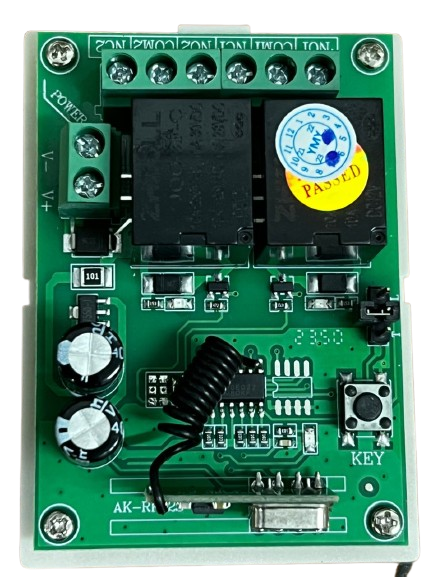
 Design with RC 12V relay module in Cirkit Designer
Design with RC 12V relay module in Cirkit DesignerIntroduction
The RC 12V relay module is an electronic switch designed to control high-voltage circuits using a low-voltage control signal. It features a 12V control circuit and an electromechanical relay capable of switching higher voltages and currents. This module is widely used in automation, home appliances, and industrial control systems to manage devices such as motors, lights, and other electrical equipment.
Explore Projects Built with RC 12V relay module
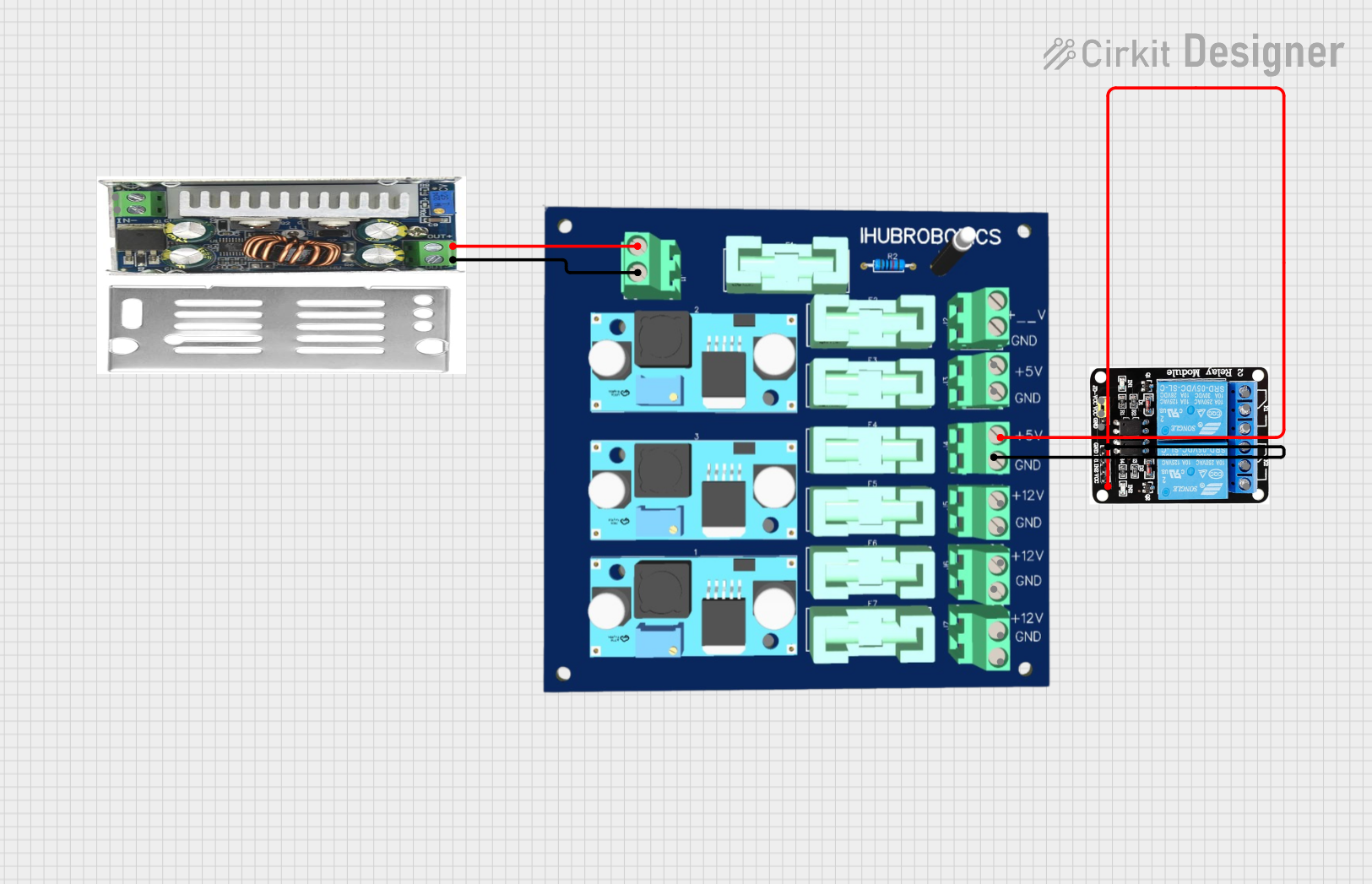
 Open Project in Cirkit Designer
Open Project in Cirkit Designer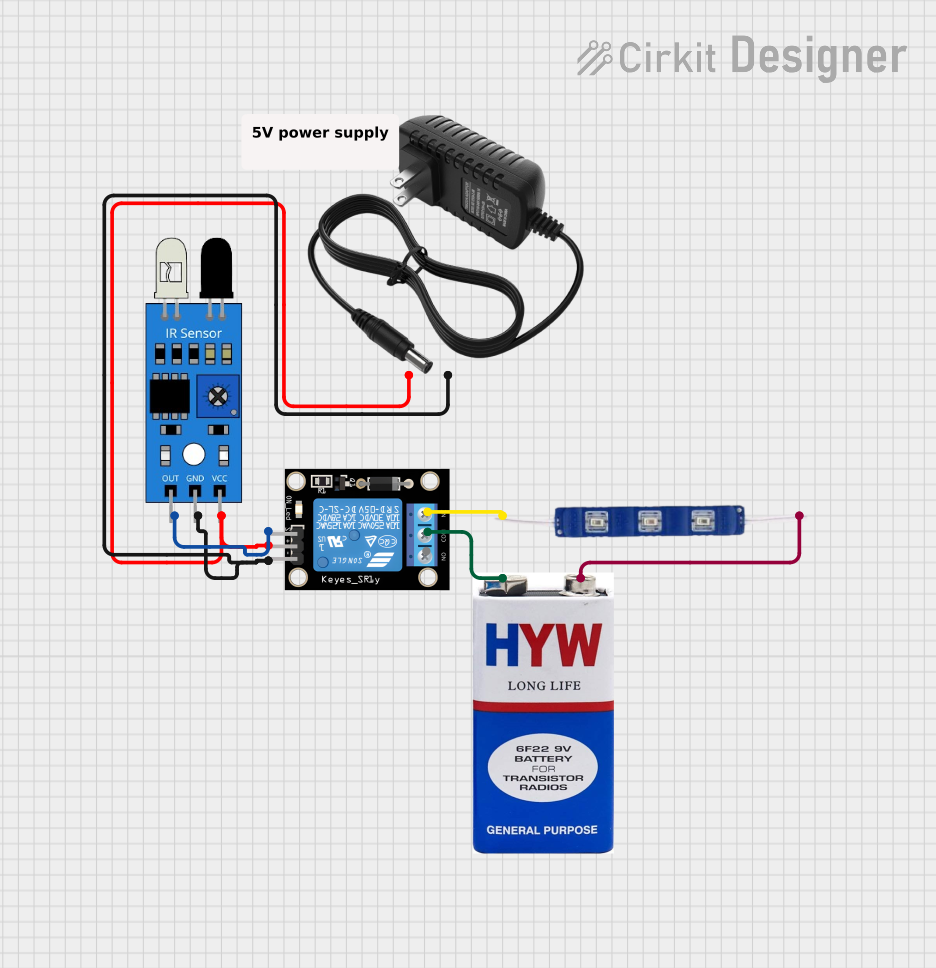
 Open Project in Cirkit Designer
Open Project in Cirkit Designer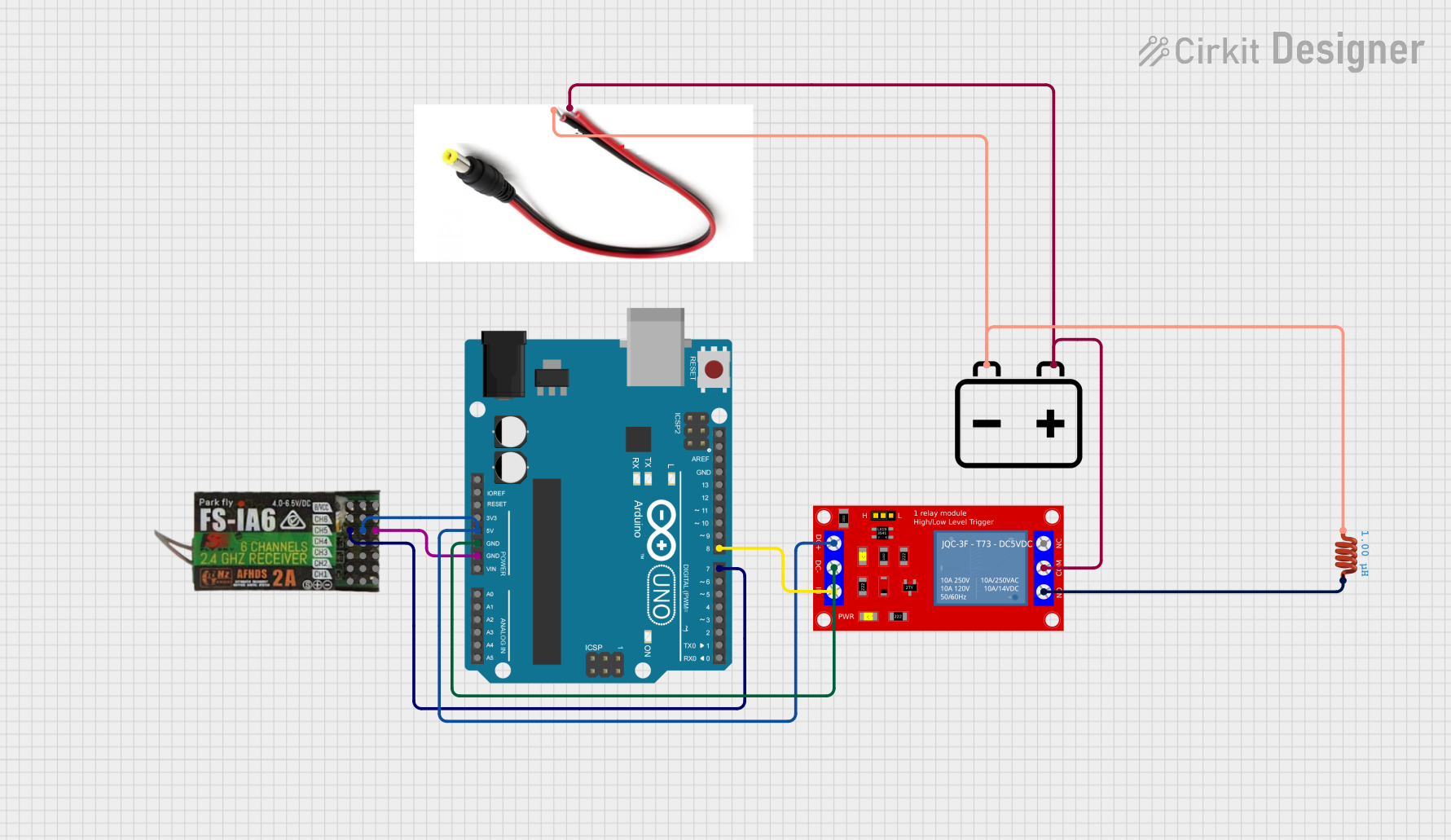
 Open Project in Cirkit Designer
Open Project in Cirkit Designer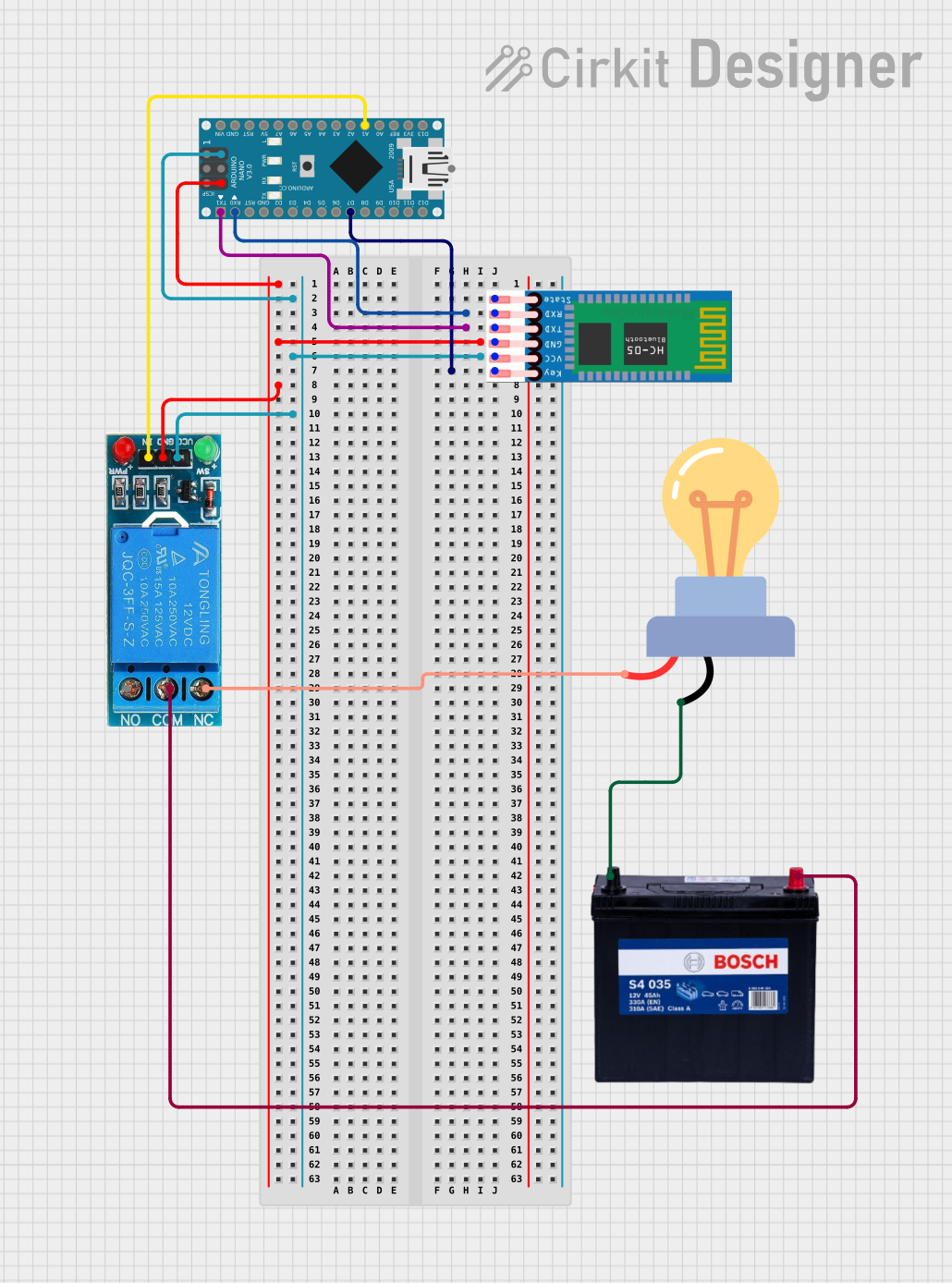
 Open Project in Cirkit Designer
Open Project in Cirkit DesignerExplore Projects Built with RC 12V relay module

 Open Project in Cirkit Designer
Open Project in Cirkit Designer
 Open Project in Cirkit Designer
Open Project in Cirkit Designer
 Open Project in Cirkit Designer
Open Project in Cirkit Designer
 Open Project in Cirkit Designer
Open Project in Cirkit DesignerCommon Applications:
- Home automation systems (e.g., controlling lights or fans)
- Industrial equipment control
- Motor control in robotics
- Smart home projects
- Interfacing high-power devices with microcontrollers like Arduino or Raspberry Pi
Technical Specifications
Key Technical Details:
- Operating Voltage (Control Circuit): 12V DC
- Trigger Voltage: Typically 3-12V DC (depending on the module design)
- Relay Type: SPDT (Single Pole Double Throw) or SPST (Single Pole Single Throw)
- Maximum Load Voltage: 250V AC or 30V DC
- Maximum Load Current: 10A
- Isolation: Optocoupler isolation (in most modules)
- Indicator LED: Onboard LED to indicate relay activation
- Dimensions: Varies by manufacturer, typically compact for easy integration
Pin Configuration and Descriptions:
The RC 12V relay module typically has the following pins and terminals:
Control Pins:
| Pin Name | Description |
|---|---|
| VCC | Connect to the 12V DC power supply to power the module. |
| GND | Ground connection for the module. |
| IN | Control signal input. A HIGH signal activates the relay, and a LOW signal deactivates it. |
Relay Terminals:
| Terminal Name | Description |
|---|---|
| COM | Common terminal. Connect to the input of the circuit being controlled. |
| NO | Normally Open terminal. Connect to the load. Closed when the relay is active. |
| NC | Normally Closed terminal. Connect to the load. Closed when the relay is inactive. |
Usage Instructions
How to Use the RC 12V Relay Module in a Circuit:
Power the Module:
- Connect the VCC pin to a 12V DC power supply and the GND pin to the ground.
- Ensure the power supply can provide sufficient current for the relay module.
Connect the Control Signal:
- Connect the IN pin to the control signal source, such as a microcontroller (e.g., Arduino).
- Use a GPIO pin from the microcontroller to send a HIGH or LOW signal to the IN pin.
Connect the Load:
- Identify whether you want to use the Normally Open (NO) or Normally Closed (NC) terminal.
- Connect the load (e.g., a light bulb or motor) to the appropriate terminal (NO or NC) and the COM terminal.
Activate the Relay:
- Send a HIGH signal to the IN pin to activate the relay. The onboard LED will light up, and the NO terminal will close the circuit with COM.
- Send a LOW signal to deactivate the relay. The NC terminal will close the circuit with COM.
Important Considerations and Best Practices:
- Isolation: Ensure proper electrical isolation between the control circuit and the high-voltage load to prevent damage to the microcontroller.
- Flyback Diode: If controlling an inductive load (e.g., a motor), use a flyback diode across the load to protect the relay from voltage spikes.
- Current Rating: Do not exceed the relay's maximum current and voltage ratings to avoid damage or failure.
- Power Supply: Use a stable 12V DC power supply to ensure reliable operation of the module.
Example: Using the RC 12V Relay Module with Arduino UNO
Below is an example of how to control the RC 12V relay module using an Arduino UNO:
// Define the pin connected to the relay module's IN pin
const int relayPin = 7;
void setup() {
// Set the relay pin as an output
pinMode(relayPin, OUTPUT);
// Start with the relay turned off
digitalWrite(relayPin, LOW);
}
void loop() {
// Turn the relay ON
digitalWrite(relayPin, HIGH);
delay(5000); // Keep the relay ON for 5 seconds
// Turn the relay OFF
digitalWrite(relayPin, LOW);
delay(5000); // Keep the relay OFF for 5 seconds
}
Notes:
- Ensure the Arduino's ground (GND) is connected to the relay module's ground (GND).
- The relay module's VCC pin must be connected to a 12V power source, not the Arduino's 5V pin.
Troubleshooting and FAQs
Common Issues and Solutions:
Relay Not Activating:
- Cause: Insufficient voltage or current to the VCC pin.
- Solution: Verify the power supply is providing 12V DC and sufficient current.
Control Signal Not Working:
- Cause: Incorrect connection or insufficient signal voltage.
- Solution: Ensure the IN pin is connected to the correct GPIO pin and receiving a HIGH signal.
Load Not Switching:
- Cause: Incorrect wiring of the load to the relay terminals.
- Solution: Double-check the connections to the COM, NO, and NC terminals.
Relay Clicking but No Output:
- Cause: Load exceeds the relay's current or voltage rating.
- Solution: Use a load within the relay's specified ratings.
FAQs:
Q: Can I use the RC 12V relay module with a 5V microcontroller?
A: Yes, but you may need a transistor or level shifter to ensure the control signal is compatible with the relay's IN pin.Q: Is the relay module safe for high-voltage applications?
A: Yes, but ensure proper insulation and follow safety guidelines when working with high voltages.Q: Can I control multiple relays with one microcontroller?
A: Yes, as long as each relay has its own control pin and the microcontroller has enough GPIO pins.Q: Why is the onboard LED not lighting up?
A: Check the power supply and ensure the VCC and GND pins are properly connected.
By following this documentation, you can effectively integrate the RC 12V relay module into your projects and troubleshoot common issues.